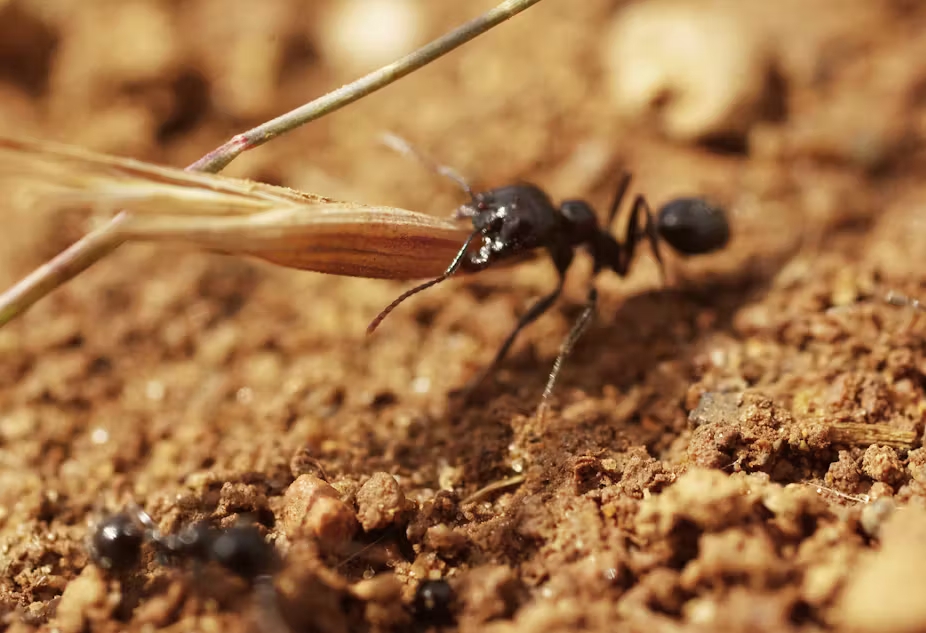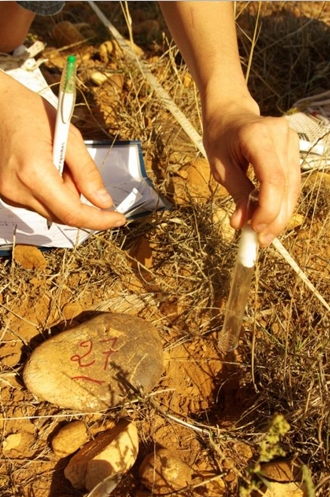EECAR-TR Restoration Ecology, Ecological Engineering
Research theme - Restoration ecology & ecological engineering
Our research in restoration ecology and ecological engineering focuses on identifying the key processes that limit resilience natural and semi-natural habitats impacted by a wide range of human activities (industrial, military, agricultural). The target organisms of our research are plants and arthropods at the level of community and population organisation, including genetic structuring. We are particularly interested in restoring the biodiversity and functionality of terrestrial ecosystems by involving plant-arthropod interactions through the identification of key species or ecosystem engineers.
The operational aim of this research is to better guide, support and evaluate ecological restoration operations. implemented in terrestrial ecosystems in a variety of contexts (ecological compensation, impact reduction, etc.) while by producing new fundamental knowledge in ecology as well as innovations in the field of restoration and ecological engineering.

Example of ongoing research - Impact of ecological restoration on pollinator assemblages
The project assesses the impact of two methods of restoring herbaceous ecosystems - hay transfer (HTR) and natural regeneration (NR) - on pollinator assemblages. To do this, we are studying the flora and plant-pollinator interactions in an old, abandoned and then restored orchard in the south of France, and helping to interpret the data collected on the subject from all over Europe (see here for more details on the subject at European level). here).
Twelve sites (4 RA - regeneration assisted by hay transfer, 4 RN - natural regeneration, 4 reference = intact lawns) were studied by sampling plant-pollinator interactions and the flora. Fifteen years after restoration, the plant composition of the RA and RN sites still differed from the reference site, which was richer in species. On the reference sites, Euphorbia seguieriana dominates interactions, mainly with Coleoptera and Diptera. On RA and RN, Galactites elegans, Lobularia maritima and Diplotaxis tenuifolia are the main floral resources. The most active pollinators are Coleoptera and Hymenoptera on RN, and also Diptera on RA. RN has the highest floral cover, followed by RA, thanks to large-flowered species. The transfer of hay alone does not restore the plant-pollinator network, as it does not sufficiently improve the floristic composition.
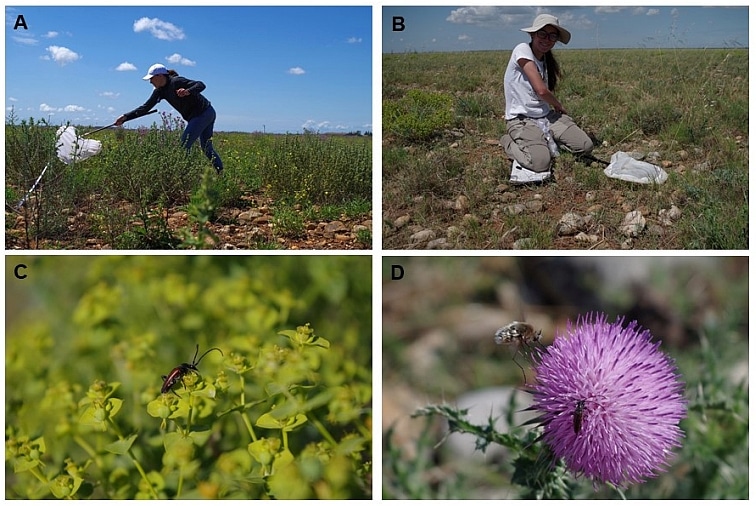
Example of current research - Re-wilding
Restoring ecosystems or rewilding, what is the best approach for restoring an ecosystem disturbed by human activities?
Both approaches aim to repair ecosystems that have been altered by human activity, but the ambitions and the methods used differ. (link). Rewilding encourages the free evolution of ecosystems without a totally defined objective, whereas ecological restoration focuses on steering natural processes towards objectives to be achieved, particularly in terms of biodiversity and the services provided by ecosystems. Clémentine Mutillod explains this research here and here
We also studied the impact of rewilding on lawn ecosystems in France. by comparing the impact on the environment of the introduction of a wild herbivorous mammal, in this case Przewalski's horse, with that of the presence of domesticated mammals such as sheep or horses. The three types of grazing enable the desired grassland community to be maintained (E1.51 - Mediterranean-montane steppes). However, the grazing by horses managed "in the wild" results in a higher plant species richness and heterogeneity than with sheep grazing. Clémentine Mutillod explains this research here and here.
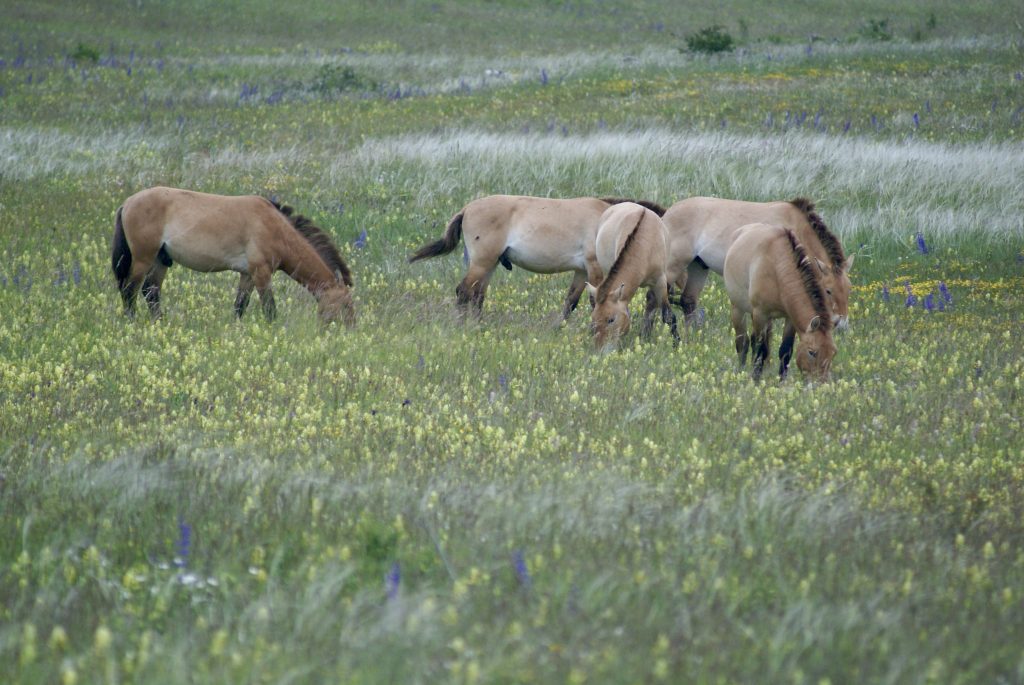
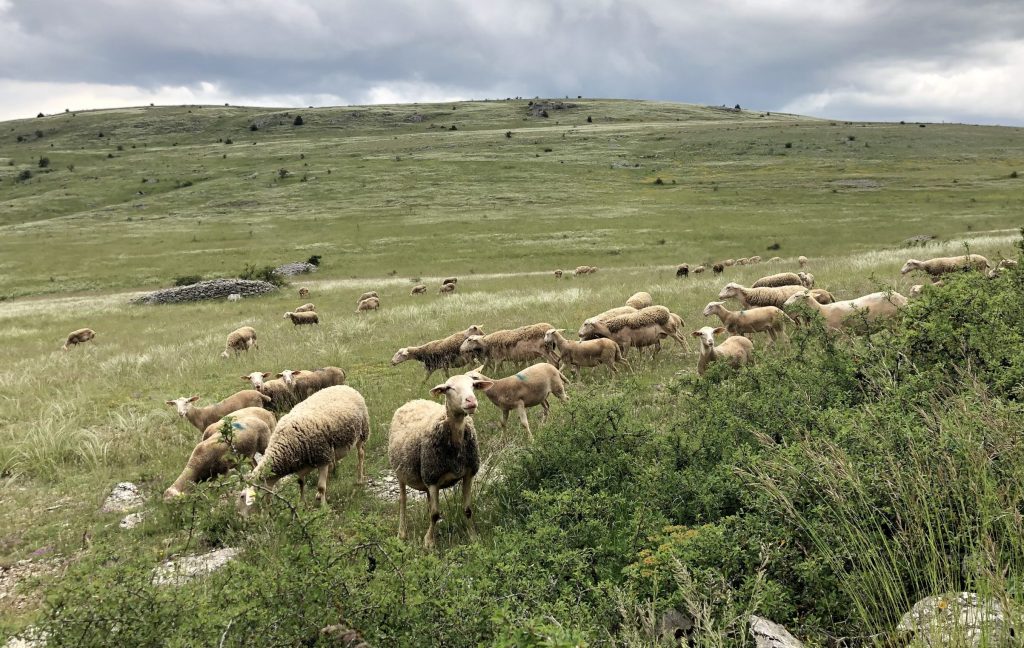
Example of research in progress - Between concrete and bitumen, what room is there for nature to return?
While rewilding and free expression appear to be attractive solutions for restoring our ecosystems in a context of climate change and ecological transition, nature still has to be capable of "doing the job". when irreversibility thresholds have been crossed.
A threshold of irreversibility has been defined as a point beyond which an ecosystem has been so degraded that its resilience capacities no longer allow it to naturally repair itself and return to its initial state.. This is particularly the case with heavy damage caused by intensive military, industrial or agricultural use.
On the Crau plain, we are currently carrying out ecological restoration experiments to overcome these irreversibility thresholds in particular by loosening a concrete slab in an industrial building constructed in the 1970s. Listen to Thierry Dutoit talk about it here. Our initial results show that while sealing the soil for 50 years has had a significant impact on most of the physico-chemical characteristics of the sub-steppe soil and its biodiversity (micro-organisms, soil fauna), resilience after unsealing should be faster than for soils polluted by heavy metals (ammunition burning) or destructured and over-fertilised (phosphorus, potassium) during intensive orcharding.
In the Crau plain, following an oil spill and the transfer of tens of thousands of tonnes of soil, we tested the reintroduction of harvester ants (Messor barbarus L.) to speed up the restoration of the pre-existing steppe vegetation (link). After ten years or so, our results have shown that the operation has been a great success, with very favourable results where nests have formed following transplantation, particularly in terms of soil fertility, herbaceous biomass and the composition and species richness of the vegetation, which are now much closer to the reference steppe (link). Thierry Dutoit and Tania de Almeida explain this research here and here.
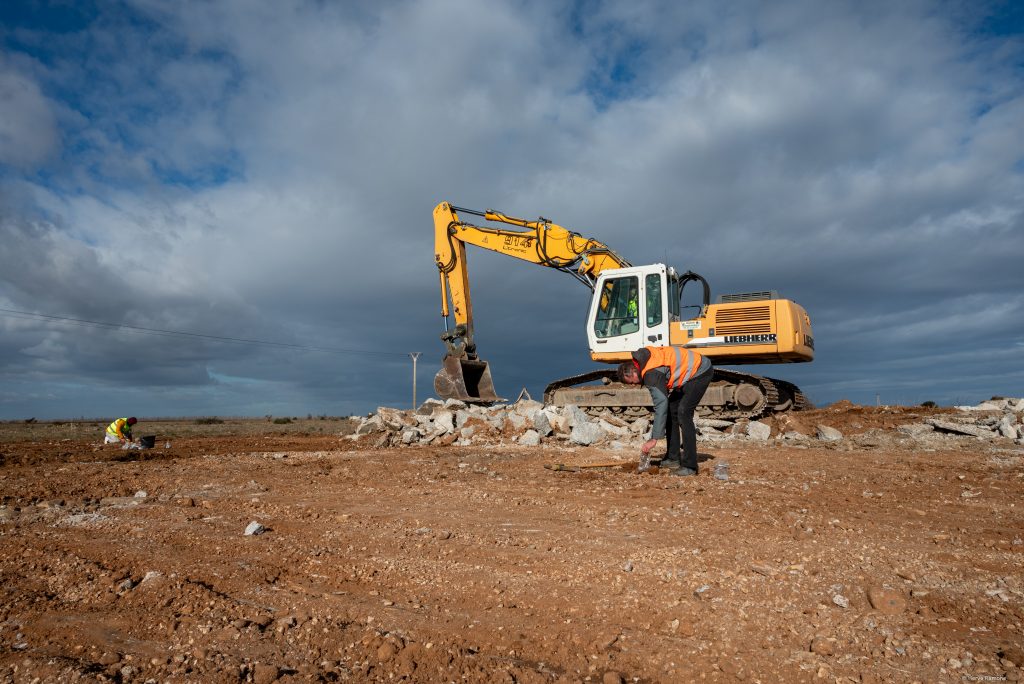
Example of recent research - Restoration and ecological integration of photovoltaic power plants
The construction of photovoltaic power plants has a strong and negative impact on vegetation and associated organisms. After construction, appropriate management by mowing or grazing can allow semi-natural grasslands to develop and soil functions to be restored. We analysed the effects of the construction of the power plants and - following construction - the effect of the presence of the photovoltaic panels on the vegetation, the fauna and the functioning of the soil and pollinators. We also tested several ecological restoration techniques. Transferring the seeds recovered by vacuum extraction to a reference community was the most promising method for re-establishing the Mediterranean grasslands at Brachypodium retusum but the presence of panels limits their installation (Lambert et al. 2022). The restoration of soil functions follows that of vegetation, but at a slower rate (Lambert et al. in press). A toolkit for managers is available from the former PIESO project: PIESOBOOST 2020. The various projects in this area have been carried out in close collaboration with the ECOSOM team..

Example of recent research - Ecological restoration of mountain grasslands in Haute Durance
The ecological restoration work linked to the installation of a new power line in the Haute Durance was carried out in collaboration with INRAE in Grenoble, the ECO-MED consultancy and RTE. Research into active restoration techniques has shown that adding seeds by transferring plant material harvested by a seed brush with a suction system significantly improves the establishment of target indicator species in reference grasslands.
The simultaneous sowing of wheat as a nurse species encourages the establishment of these species (Durbecq et al. 2022). Contrary to our initial expectations, exclosure had little effect on installation, suggesting that protective fencing is not necessarily necessary (Durbecq et al. 2021, Durbecq et al. 2023a). Experimentation has also shown that sowing in several stages can favour less competitive species by sowing them before the dominant species (priority effects), Durbecq et al. 2023b). Analyses are underway to assess the deployment of restoration measures on a larger scale.

Example of recent research - Restoring for and by nature using ecosystem engineers
Between restoring ecosystems using heavy civil engineering techniques or letting nature take its course, there is a third way: using species known as "ecosystem engineers". which are expected to play major roles at low economic and environmental cost.
An "ecosystem engineer" species is an organism that significantly modifies its environment. to the point of having a significant impact on other species, either directly through their mere presence, such as the trees in our forests, or through their activity without any link to their biomass, such as the action of beavers on our rivers. Here's what Thierry Dutoit has to say about it here
In the Crau plain, following an oil spill and the transfer of tens of thousands of tonnes of soil, we tested the reintroduction of harvester ants (Messor barbarus L.) to speed up the restoration of the pre-existing steppe vegetation (link). After ten years or so, our results have shown that the operation has been a great success, with very favourable results where nests have formed following transplantation, particularly in terms of soil fertility, herbaceous biomass and the composition and species richness of the vegetation, which are now much closer to the reference steppe (link). Thierry Dutoit and Tania de Almeida explain this research here and here.
